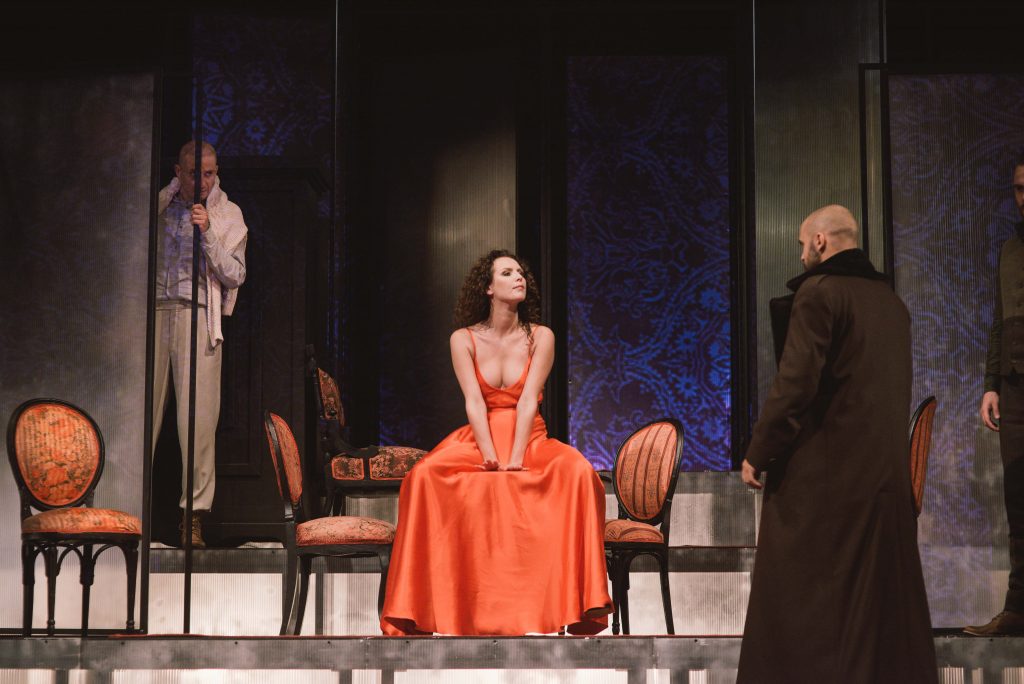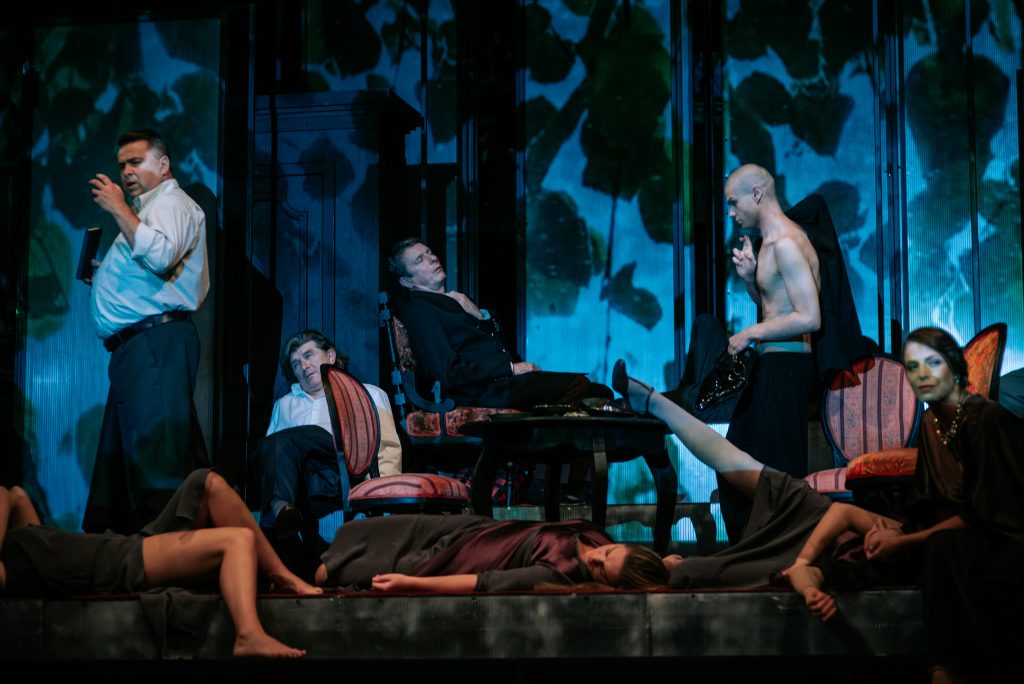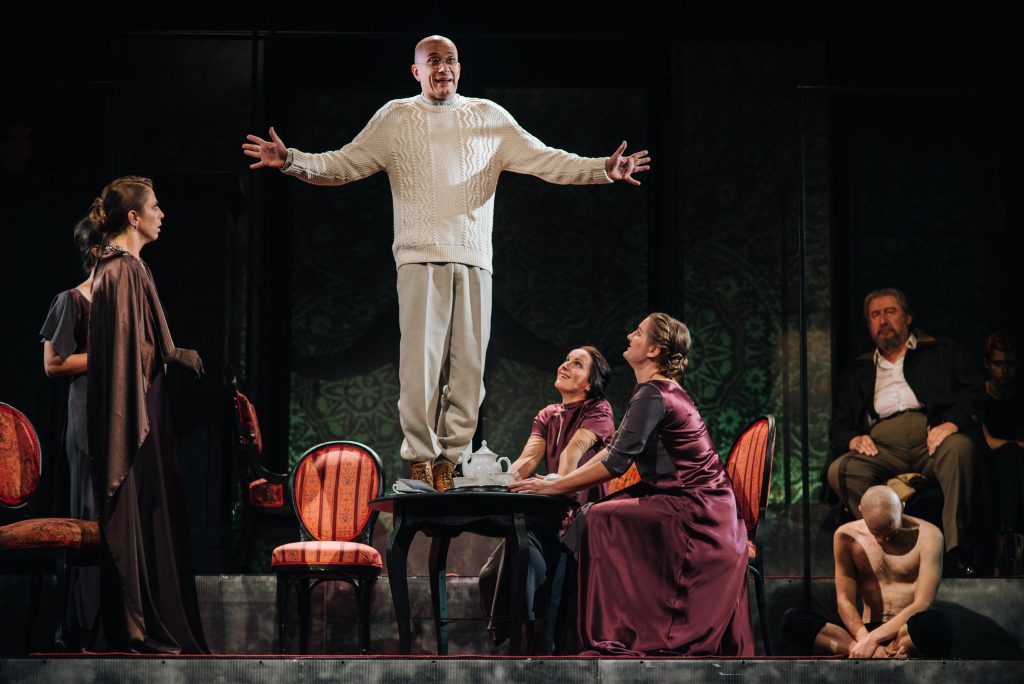Events
POLISH THEATRE IN BIELSKO-BIAŁAST. IDIOT
Janusz Opryński
SET DESIGNJerzy Rudzki
COSTUMESMonika Nyckowska
MUSICRafał Rozmus
STAGE MOVEMENTMateusz Wojtasiński
MULTIMEDIAAleksander Janas, Paweł Szarzyński
CASTOriana Soika, Marta Gzowska-Sawicka, Wiktoria Węgrzyn, Anna Figura, Jagoda Krzywicka, Maria Suprun, Daria Polasik-Bułka, Rafał Sawicki, Mateusz Wojtasiński, Tomasz Lorek, Grzegorz Sikora, Michał Czaderna, Kazimierz Czapla, Adam Myrczek, Piotr Gajos, Grzegorz Margas, Sławomir Miska, Jerzy Dziedzic
PREMIERE30 September 2017
Suitable for viewers aged 16 and over
“St. Idiot” is the title of the book by the philosopher Cezary Wodziński which he wrote in 2000. It is also the title of Janusz Opryński’s play, an adaptation of Fiodor Dostoyevsky’s “The Idiot”. Cezary Wodziński wrote a book about a Russian Holy Madman, the “yurodivy”, a maniac, lunatic, fool who deliberately put on a mask of madness to hide their wisdom behind it. As a homage to Cezary Wodziński, Opryński decided to call his adaptation “St. Idiot”. Dostoyevsky, it seems to like the Russian yurodivys and we find the characteristics of these sacred hooligans in many of his protagonists.
Reading “The Idiot” in the context of our knowledge about the Holy Madmen makes us ponder upon our condition and our world order. Many characters and events in the novel bare the traits of provocation and scandal that the Holy Madmen have developed a liking for. Hence, when Prince Lev Myshkin, returns from therapy in Switzerland at the beginning of the story, Rogozhin (his “gloomy brother”) recognises the holy fool in him; “You come out as a holy madman, Prince, and God loves your kind!” In that moment, an insane dance starts, a carnival dance, which makes the world spin for us. The Prince infects the world, the world starts to share his epilepsy, his trembling… “One Idiot releases the idiot in another”, says Cezary Wodziński.
The world of the Jepansin family will never be the same again, everything changes with the Prince’s return. Aglaya and Nastasya, both true beauties, both terminally ill and mortally dangerous, follow Prince in an ecstatic dance. Rogozhin, deadly in love with Nastasya, is ready to kill the Prince, but not only him. Lébedyev, the roguish drunkard, who studies the Apocalypse, together with the greedy Ganya are shaking the world, each in their own way. Little Hippolyte, a walking dead, not being able to look the Holy Madman in the eye, wants to take his own life in a spectacular way.
The entire world shakes. It shakes when we look at Hans Holbein’s Dead Christ painting in Rogozhin’s house, but it shakes even stronger, when we watch the “Dead Nastasya” in that same house. This last quake bends the world – its axe divides it diagonally. And not even the noble Lizavéta Prokófyevna Jepasin is able to save the world in her belief that the old order shall save us once again.
The play from Bielsko-Biała is also an image of a world plunged into insanity, tormented by spectacular events or human paroxysms. In the scenes of Myshkin’s epileptic attacks, the entire stage was shaking, as if the Dostoyevski’s protagonist made it shake. The tremor comes back as a returning refrain, emphasizing that the reality we enter may shake for long. One might also delve into the Russian aesthetics carried by the Orthodox singing.
Jacek Wakar, Teatr
Is it possible to escape from a world of epilepsy? In St. Idiot there is a suggestion of salvation, not in the religious sense, but salvation through beauty. Prince Myshkin sees it in Nastasya Filippovna. It is not quite physical beauty that makes Myshkin fall in love. As he says to Rogozhin, he loves Nastasya “not with love but with sorrow.” “The feeling of mercy, this deep, almost painful compassion never left his heart, it didn’t leave it now.” The beauty of Dostoyevski is, therefore compassion, mercy. Milan Kundera defined this Russian state, “a painful state caused by a sudden realisation of one’s depravation.” In the finale of Opryński’s play Myshkin and Rogozhin unite in mercy, sitting at the bed, where Nastasya Filippovna’s dead body is rested.
Wojciech Engelking, Culture.pl




